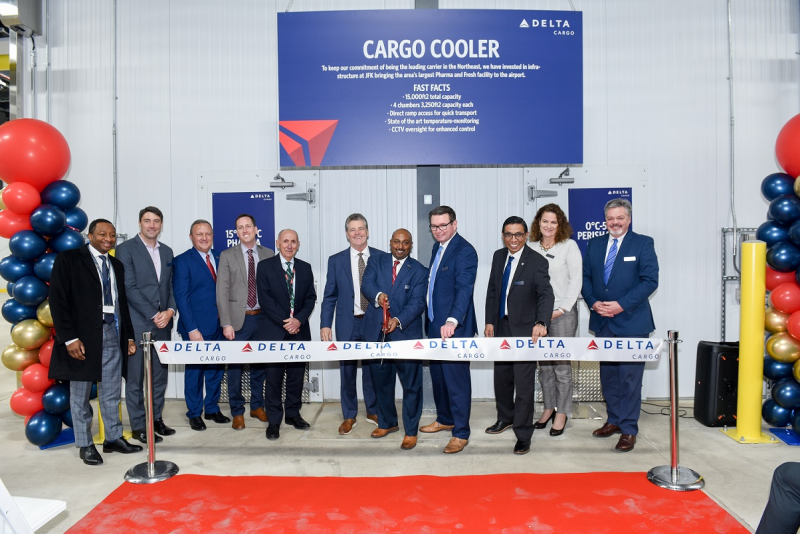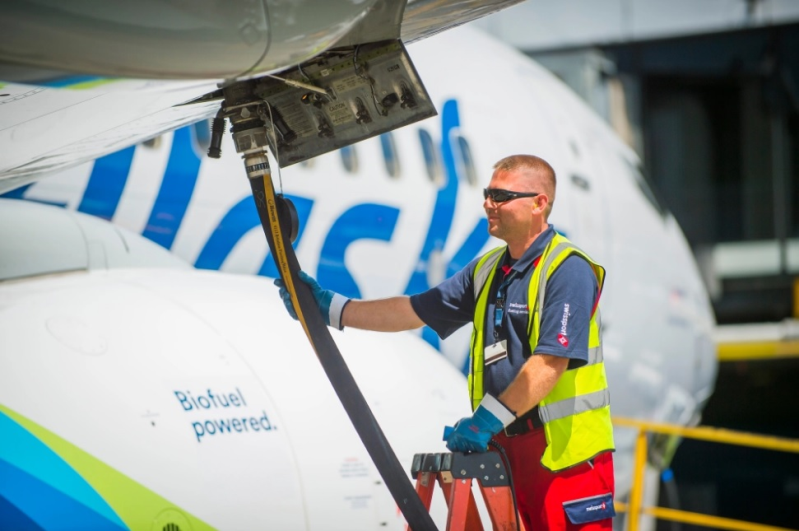
Starting June 1st, 2023 Our warehouse fee will be $0.65/cubic foot per month
In effort to lower the warehouse storage fee during inflation, we have went narrow aisle racking.This construction took us four months but the project is finally completed. With narrow aisle racking, we are able to drop storage by 24%.We as partners will go through this inflation together.
03/28/2023
Investors see Chicagoland as target-rich environment for cargo diversion
A rendering of the proposed air cargo hub at Milwaukee Mitchell International Airport (Image: Crow Holdings)
The Greater Chicago area's air cargo industry is becoming increasingly competitive as Milwaukee's primary airport plans to construct a sizable terminal for freighter aircraft, intending to attract traffic from the region's leading cargo hub, Chicago O'Hare, as well as the emerging Chicago Rockford airport.
Although the robustness of the local economy suggests that the investment is justifiable, a specialist suggests that it will be difficult to capture more than excess shipments from a major international gateway such as O'Hare.
Nonetheless, project organizers are optimistic about attracting cargo airlines and logistics companies seeking rapid access to the Chicago megamarket at a much lower cost than O'Hare, without the persistent congestion, and leveraging the rapidly expanding industrial base in southeast Wisconsin.
Crow Holdings, a private real estate investment and development firm with $24 billion in airport assets under management, declared earlier this month its plans to establish and manage a 288,000-square-foot logistics center at Milwaukee Mitchell International Airport (MKE) in exchange for a long-term ground lease.
Jack Rabenn, vice president of industrial at Crow, stated that businesses in Milwaukee have a built-in demand for air cargo services. Furthermore, many companies will find it more cost-effective to transport cargo by flying it into Milwaukee and then trucking it to Chicago, rather than paying a premium for direct flights into Chicago. Rabenn expressed confidence in their marketing strategy.
The facility's completion is slated for the latter half of next year at the earliest. Rabenn anticipates that by that time, the air logistics market will have recovered.
After facing difficulties in finding tenants, the Milwaukee County government decided to transfer operating rights for a large parcel of land on the airport's south side, previously a U.S. Air Force Reserve base until 2010, to a concessionaire.
As described by project organizers, the MKE airside flow center will feature high ceilings and a spacious layout to accommodate storage and sorting, as well as 74 docks and 99 trailer stalls. This design is in stark contrast to many airports' cramped facilities, including O'Hare, which were constructed before the current generation of large freighter aircraft and often experience frequent backlogs. While the city of Chicago has added some modern cargo warehouses recently, it still maintains older properties.
Milwaukee airport’s cargo volume is expected to increase 124% over 20 years (Source: MKE master plan)
The cargo center at Milwaukee Airport will soon be able to accommodate up to five 747-size freighters, eight standard jets, or a combination of both. The building will be constructed with energy-efficient precast walls and will be designed to accommodate prospective tenants.
According to Rabenn, the Milwaukee airport could attract a variety of businesses to establish operations, including integrated express carriers, all-cargo airlines, and logistics companies with chartered fleets. The airport is actively seeking prospective tenants for the new ramp and cargo facility.
A study conducted for the airport authority forecasts a 3.7% annual compound growth rate, which could lead to 182 million tons in 2040, more than double the volume of any year in the preceding decade. This growth aligns with Boeing's 20-year outlook, which predicts a 4.1% global growth rate. As businesses increasingly rely on freighters over passenger belly capacity, the Milwaukee airport master plan expects to see an increase in the use of dedicated cargo jets driven by the growth of e-commerce volumes.
The airport in Milwaukee is already home to a number of major shipping companies, including FedEx (NYSE: FDX), UPS, and DHL. FedEx leases 86,000 square feet in a legacy cargo building and performs approximately 1,100 round-trip turns annually at MKE. DHL primarily utilizes a third-party cargo handler in the region to transport Amazon packages.
UPS (NYSE: UPS) has the most urgent need for a new airport facility among the three major carriers. Currently, the company occupies 18,000 square feet in two separate areas with eleven truck bays. Its flight activity is one-fourth that of FedEx, but its ramp space and parking for small aircraft are at capacity. The business has expressed an urgent need for restrooms, office space, and a container sorting facility.
UPS is considering expanding to other regional airports if Milwaukee International Airport cannot be improved quickly. Existing cargo areas at the airport are either underutilized and inefficient or overcapacity. To meet the growing shipping demand, the cargo facilities at Milwaukee Airport must be consolidated and technologically upgraded.
Market opportunities
Southeast Wisconsin is an ideal location for dedicated cargo service due to its concentration of industrial facilities comprising millions of square feet. Companies like Amazon and Uline, as well as other large-scale warehouses, have a significant presence in the region. In recent years, new industrial buildings have been built in Milwaukee, replacing older Class B and C properties. Additionally, the airport can accommodate demand from Madison and Green Bay.
The landscape surrounding Milwaukee airport is dotted with smaller warehouses and truck terminals, creating a complementary industrial infrastructure that gives the airport an advantage over Chicago Rockford International Airport, according to Rabenn. Milwaukee has a larger metropolitan area and more industrial properties in the surrounding area than Rockford, making it a more desirable location for cargo operations.
The airport's location along Interstate Highway 94 provides easy access to downtown Milwaukee and Chicago to the south. In recent years, Rockford has experienced rapid growth, becoming the second-largest U.S. air hub for UPS and a major node in Amazon's private air network. In addition, freight forwarders Maersk Air Cargo and DB Schenker have leased airside space there.
Crow Holdings and CBRE (NYSE: CBRE) are promoting Milwaukee airport as a viable alternative to Chicago O'Hare International Airport for tenants seeking to avoid the congestion and high costs associated with basing their operations there. Although O'Hare is one of the largest airfreight hubs in the United States, outdated terminals, limited truck access, and a lack of modern technology can cause cargo bottlenecks during peak shipping periods, resulting in lengthy waits for truckers and shippers.
Rabenn noted that the Milwaukee airport offers significant cost savings in comparison to O'Hare, with landing fees that are half as much as at O'Hare, lower taxes, and a significantly lower ground lease that enables Crow to charge tenants lower rent. Crowe has an undisclosed equity partner that will provide additional financing, thereby making it easier to secure debt financing as needed.
Michael Webber, a cargo consultant, concurred that Milwaukee is an excellent market for logistics companies; however, the airport's facilities require modernization. According to Webber, the business case for the airport's redevelopment is predicated primarily on replacing obsolete capacity and catering to Milwaukee's thriving metropolitan economy. He questioned, however, how much cargo could be diverted from O'Hare, which remains a magnet for widebody passenger traffic in the region.
Webber explained that secondary airports acquire freighter services when logistics companies have a few key clients with sufficient volume to warrant chartering dedicated flights to specific locations. Freight forwarders prefer airports with a diverse range of international traffic because it provides them with more shipping options and the ability to create specialized routes for their clients when direct flights are unavailable.
MintN

3PL - Third Party Logistics
05/14/2024

3PL - Third Party Logistics
03/29/2023

3PL - Third Party Logistics
03/30/2023
3PL - Third Party Logistics
03/20/2023

3PL - Third Party Logistics
05/12/2023